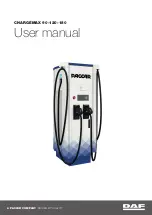
Cadillac CTS/CTS-V Owner Manual (GMNA-Localizing-MidEast-12470572) -
2019 - crc - 6/21/18
VEHICLE CARE
309
If the vehicle is equipped with a tow
eye, only use the tow eye to pull the
vehicle onto a flatbed car carrier from
a flat road surface. Do not use the tow
eye to pull the vehicle from snow,
mud, or sand. The tow eye is
underneath the load floor, near the
spare tire or the compressor kit,
if equipped.
Carefully open the cover in the fascia
by using the small notch that conceals
the tow eye socket.
Install the tow eye into the socket and
turn it until it is fully tightened. When
the tow eye is removed, reinstall the
cover with the notch in the original
position.
Recreational Vehicle
Towing
Recreational vehicle towing means
towing the vehicle behind another
vehicle such as a motor home. The
two most common types of
recreational vehicle towing are known
as dinghy towing and dolly towing.
Dinghy towing is towing the vehicle
with all four wheels on the ground.
Dolly towing is towing the vehicle
with two wheels on the ground and
two wheels up on a device known as a
dolly.
Here are some important things to
consider before recreational vehicle
towing:
.
Before towing the vehicle, become
familiar with the local laws that
apply to recreational vehicle
towing. These laws may vary by
region.
.
What is the towing capacity of the
towing vehicle? Be sure to read the
tow vehicle manufacturer's
recommendations.
.
What is the distance that will be
traveled? Some vehicles have
restrictions on how far and how
long they can tow.
.
Is the proper towing equipment
going to be used? See your dealer
or trailering professional for
additional advice and equipment
recommendations.
.
Is the vehicle ready to be towed?
Just as preparing the vehicle for a
long trip, make sure the vehicle is
prepared to be towed.
















































